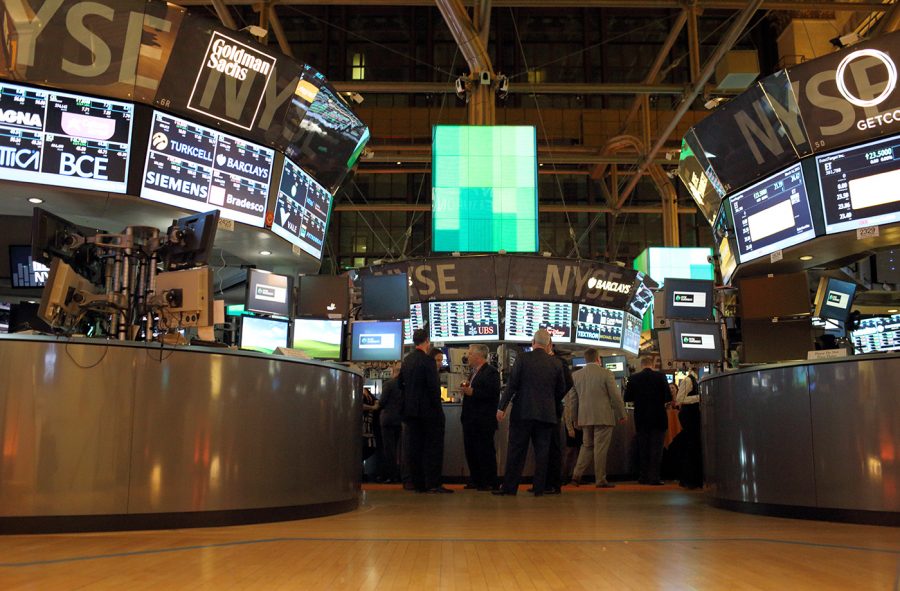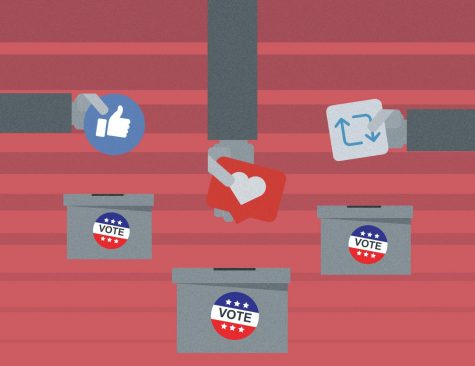Biden’s Plan Provides a Path to Sustainable Economic Growth
October 28, 2020
The second and final presidential debate between President Donald Trump and former Vice President Joe Biden centered around the current administration’s response to COVID-19, government expenditures and taxation and social injustices that people of color face every day. Although presidential debates have generally been viewed as political theater and an opportunity for candidates to rip into their rival’s credibility, the debate’s main talking points accurately reflected the nominees’ policies and characters. Joe Biden’s moderate persona allows more people to resonate with his message. There has been a substantial shift of swing voters siding with Biden in this election, as his 10-point lead against the incumbent speaks for itself. However, Biden’s platform, consisting of raising money for education, infrastructure and sustainable energy sources, has drawn scrutiny from the GOP. Republicans have repeatedly misrepresented Biden’s tax plan by assuming his government expenditures will result in tax increases for middle-class families. Fortunately for any middle-class voter, regardless of political affiliation, neither candidate is running on raising taxes for individuals making less than $400,000. The Democratic nominee plans to take government action to address average Americans’ real issues, whereas the GOP’s focus has been on pleasing wealthy individuals and companies. For this reason, Joe Biden’s propositions would benefit the U.S. economy more than Donald Trump’s existing policies.
To reiterate this comparison, it is essential to look back at Trump’s greatest accomplishment in office, which is achieving the biggest corporate tax cut in U.S. history. Corporations have been paying a 21% corporate tax for almost three years, a 40% decrease from before the act was signed into law. Vice President Mike Pence proudly stated during the vice presidential debate how a middle-class family of four earning $73,000 annually received a $2,000 tax cut in 2018. Of course, any hard-working family would cherish this opportunity, as the parents can choose whether to save or invest it back into the U.S. economy. However, after adjusting for inflation, the average individual or household has just about the same purchasing power it did 40 years ago.
So, where did most of the tax relief go? Back into the hands of corporations. All supporters of the GOP bill said this tax break would lead to corporate investment in machinery, software, employment and wages and a trickle-down effect on the U.S. economy. Eleanor Wilking, an assistant law professor at Cornell University, stated that companies spent $200 billion more on stock buybacks than on research and development. In addition, many corporations pocketed the money for a rainy day and instead paid dividends to their shareholders. As a result, GDP growth has fallen short of the GOP’s projection (4% to 4.5% per quarter) at just 2.9%. While the top 1% of the U.S. population might have benefited significantly from the act, issues concerning underfunded public schools, lack of infrastructure and the need for renewable energy investments went unaddressed.
Luckily for middle-class families, they can vote for a candidate whose primary focus is these three issues. Last month, economists at Penn Wharton Business Model (PWBM) projected the future effects of every aspect of Biden’s platform, especially his tax raises, government expenditures and immigration policy. The key takeaways from the budget analysis are that the largest areas of new net spending are education at $1.9 trillion over 10 years, infrastructure research and development at $1.6 trillion over 10 years and a $2 trillion plan that puts the U.S. on a path to zero carbon pollution from the electricity sector by 2035 with net-zero emissions by 2050. Under Biden’s tax plan, households with an adjusted gross income (AGI) of $400,000 or less would not have a tax raise, but due to the corporate tax hikes, these families would face an average decrease in after-tax income of 0.9%. Moreover, families with an AGI greater than $400,000 would have a 17.7% decrease in after-tax income.
In addition, Moody’s Analytics conducted a study regarding the macroeconomic consequences between Republicans’ and Democrats’ economic policies from 2020 to 2030. This analysis compares the scenarios of both a Republican or Democratic sweep, defined as a single party controlling both the House of Representatives and the Senate and winning the presidential election. When measuring an economy’s health, three important aspects are real GDP growth, the labor force participation rate and the federal funds rate. The Democrats have a projected 2.9% annual growth rate for real GDP, while Republicans have a projected 2.4% average annual growth rate. The Democrats’ 63.3% average rate is greater than Republicans’ 62.1% for the labor force participation rate. And the Democrats’ 1.8% average is more significant for the federal funds rate than Republicans’ 1.5% average.
To summarize, Moody’s and PWBM’s analysis research concludes that the Democrats’ economic platform is primarily focused on economic growth and middle-class assistance through raising taxes on corporations and individuals making more than $400,000 annually. While Trump touts his creation of “the greatest economy in this country’s history,” economists believe that Joe Biden is the better candidate to sustain growth.
Mikael La Ferla, GSB ’23, is a business administration major and information systems minor from Philadelphia, Pa.












If you want a picture to show with your comment, go get a gravatar.